Dries Van Noten has long gone his own way within the fashion system. Organizing runway shows has been a particular interest—and focus—for the forward-thinking Antwerp-based designer. As he told Vanessa Friedman of The New York Times earlier this year, just before his 100th presentation, “[The shows] are not the cherry on the cake, they are the cake.” While “experiential” is an of-the-moment buzzword, Van Noten has been bringing this idea to bear through his decadent, unexpected sets and designs for decades, knowing that the environment around a runway is just as important to nail as the clothing. Rather than whizbang pyrotechnics, Van Noten’s intricately orchestrated presentations are known for being sincere, subtle, and audience-minded. In each show, the power of memory is in play: According to Business of Fashion editor-at-large Tim Blanks and FIT Museum director and Surface contributing editor Valerie Steele, the audience is not likely to forget what they’ve seen for weeks, years, or even a lifetime. Here—to coincide with the release of two new books, Dries Van Noten 1-50 and Dries Van Noten 51-100 (Lannoo Publishers), out next month—Blanks and Steele tell us about their most noteworthy experiences at Van Noten’s shows, and why his work remains as poignant as ever.
Why Dries Van Noten’s Runway Shows Are the Absolute Best
Journalist Tim Blanks and FIT Museum director Valerie Steele tell us what sets the Antwerp-based fashion designer’s presentations apart.
Journalist Tim Blanks and FIT Museum director Valerie Steele tell us what sets the Antwerp-based fashion designer’s presentations apart.
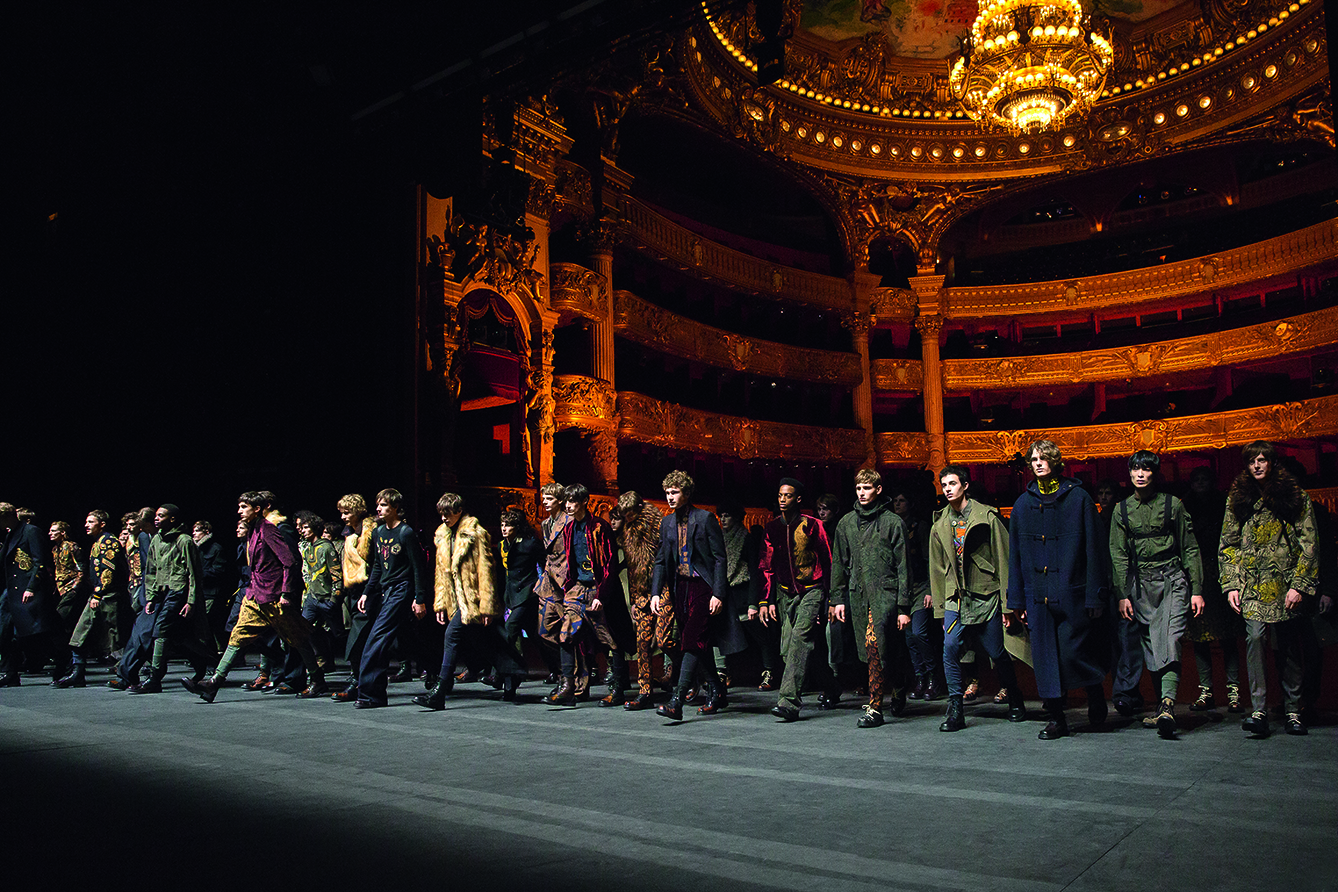
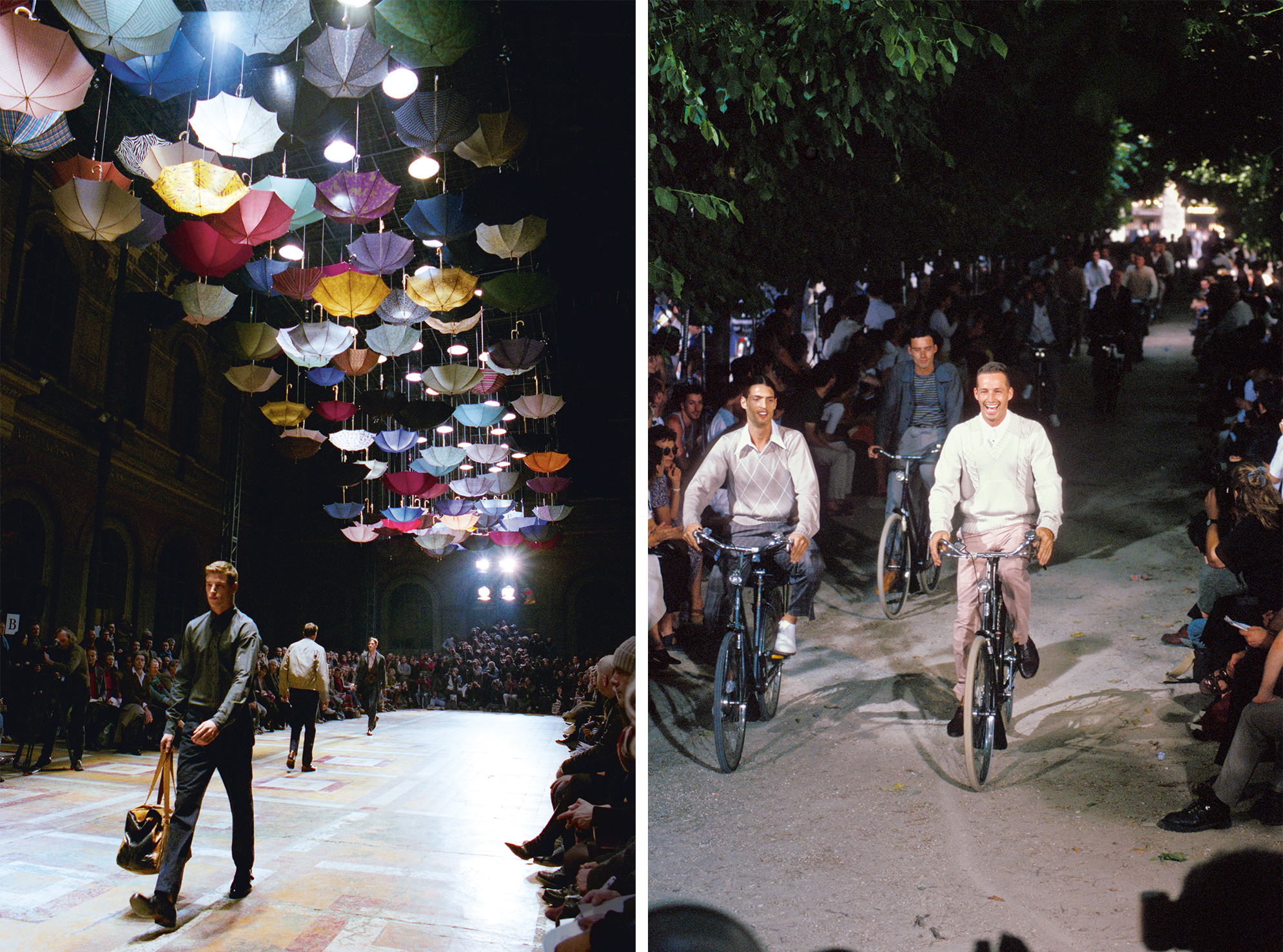
Tim Blanks: I reckon I started going to Dries’s shows around show number six. The late ’90s/early aughts in particular was truly a golden era, full of incredible spectacle in fashion, and Dries was absolutely up there with John Galliano and Alexander McQueen as one of the leading showmen of that time.
What’s remarkable is how much the spectacle of fashion has meant to Dries from the beginning. Even when there were limited resources, there was an emphasis on extending the essence of the collection into this big, theatrical context. His shows have always been marked by this appreciation of theatrics, but also his humanist approach. Sometimes Galliano would overwhelm you with beauty you would never have imagined—McQueen would shock you in the same way. Dries approached it differently: Rather than something simply jaw-dropping, there was this embrace. Especially the way he would always serve food at his shows. Something about these canapés would reflect the spirit of the collection in an obtuse or even obvious way. At one show, he served goulash. The weather was miserable, it was dark and cold, and so I ate the goulash. It became clear he wasn’t just a great designer—he was also a really good host.
Surrealism is something that has been important to Dries all along, and is something that’s also important in Belgian culture. I mentioned an embrace, but there’s also this rather delicious dislocation—the sideways glance—in his work. This stance of an environment, an aesthetic that governed everything, was always there. You weren’t just looking at clothing; you were looking at a way of life.
Music, to me, is incredibly important in a fashion show, and Dries has always had very interesting people doing it. He’s managed to pull off some incredible coups. For his fall 2011 men’s show, inspired by the the Thin White Duke, David Bowie gave him the tracks for “Golden Years,” and Soulwax broke them down and remixed them. And then for the women’s show that followed it, Bowie gave the tracks for “Heroes,” and Soulwax again broke it down and built it back up. These were very conscious aural complements to what we were looking at.
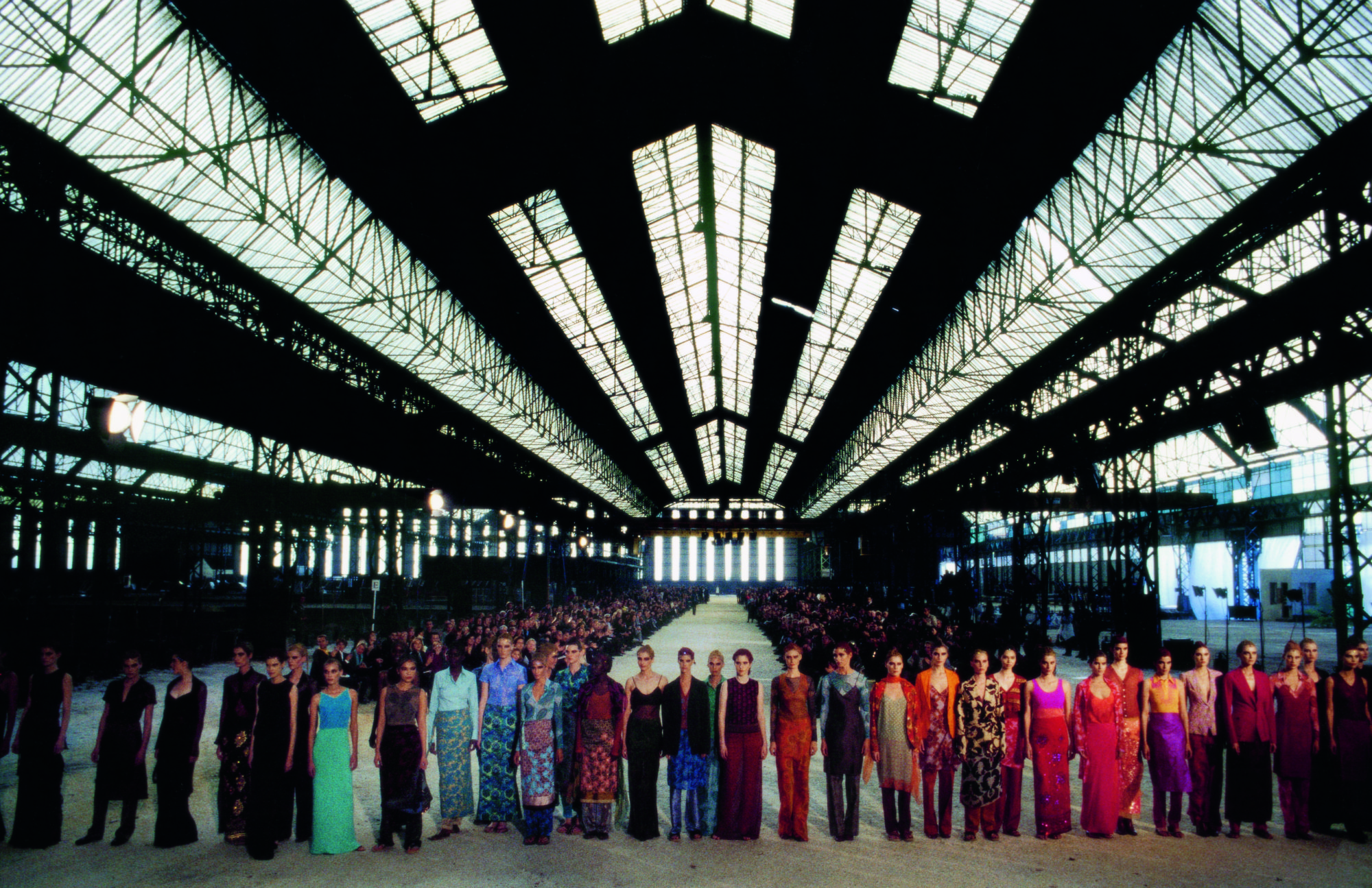
One of his shows [for spring 2005] actually took place on a dinner table. It sounds absolutely impossible that there were however many hundred people at these long tables that the models would walk on while we were eating and drinking. That in itself was remarkable. When you think about Chanel’s shows, they’re these enormous, technical masterworks of engineering, as if produced by Lockheed Martin. Dries’s shows are equally technical in their way, with the synchronicity required, but much more personal and human.
Another amazing show was the one with hundreds of thousands of Christmas lights that rose and fell in time to the music [for women’s fall 2003]. It was like being in heaven. It was utterly celestial. It created such a benchmark.
The thing about Dries is that what he shows is what he sells, and unlike a lot of other designers who have a commercial collection, he only does two seasons, four collections. He doesn’t do resort or any of those other things that everybody else does. More than most other designers, with Dries, you get a lot of clothes in each show.
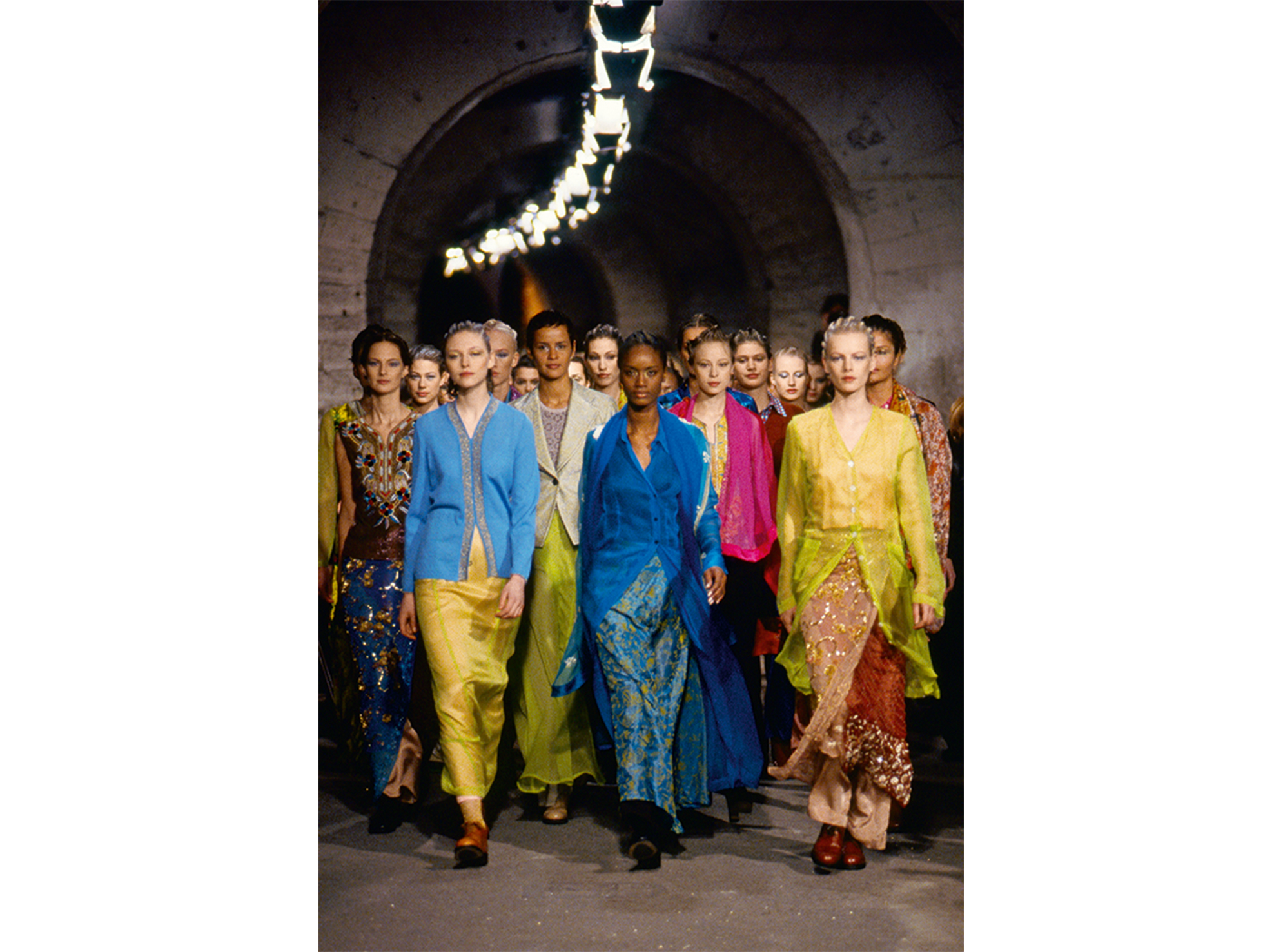
Fall/winter 1996 women's. (Photo: Marleen Daniels)
…Dries thinks in such a studied way about what he does. One example is the fall 2012 men’s collection he did that was inspired equally by Frank Zappa and Oscar Wilde. Artists were painting these huge murals during the show while the models were walking, and the print that they were working on behind on that show was later duplicated on the clothing. What an incredible symbiosis.
Now that Dries has reached show number 100, I’m just mesmerized to see what he does next. I think Dries has become an inspiration to a new generation. His business model is something to aspire to. Even designers like Alessandro Michele at Gucci, showing the men’s and women’s collections together, and making things more coherent, connects to this. With Gucci, you don’t get the seasonality in it anymore; there’s no longer this sense of, “This is the old stuff, this is the new stuff.” There’s just this one consistent ethos being offered.
Dries has a measured sense of what he does. He’s not walking off one end of the catwalk and then going back to the studio and starting the collection he has to show next week. Dries has just done it his way. He’s found something that works extremely well. He has a very distinct signature, which is the voice of experience. It doesn’t scream or whisper; it just speaks with a quiet authority.
The shows are this perfect capsule of all these moments in his career. Since hitting show number 100, I think it’s been amazing for him to stop and think about what that all adds up to: a really serious body of work. The only thing that I regret—which Dries doesn’t—is that that the actual physical experience of it all is in the ether. I feel so lucky that I was there for these shows, but I feel so sorry for everybody else who wasn’t. It’s quite bittersweet, actually.
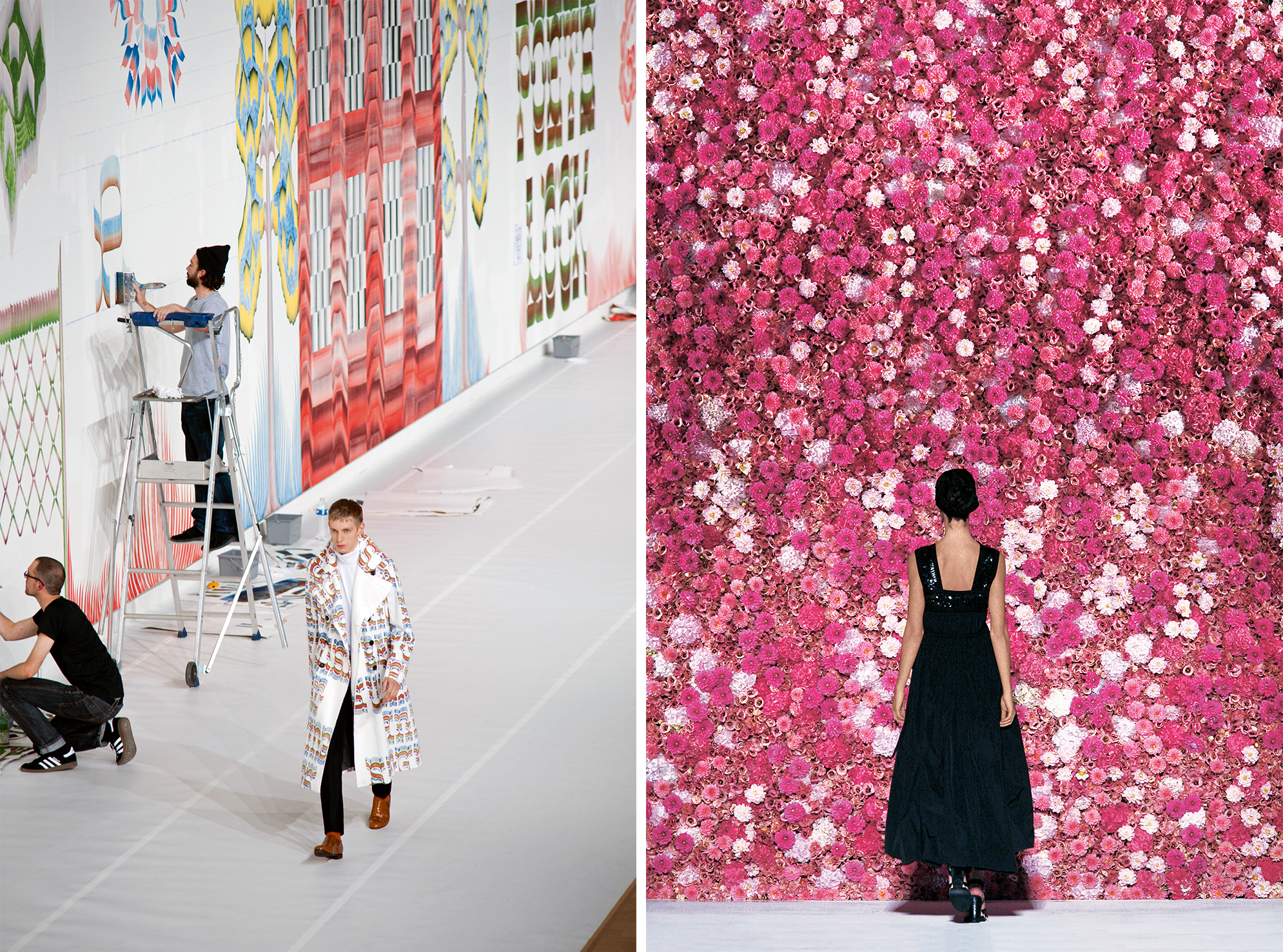
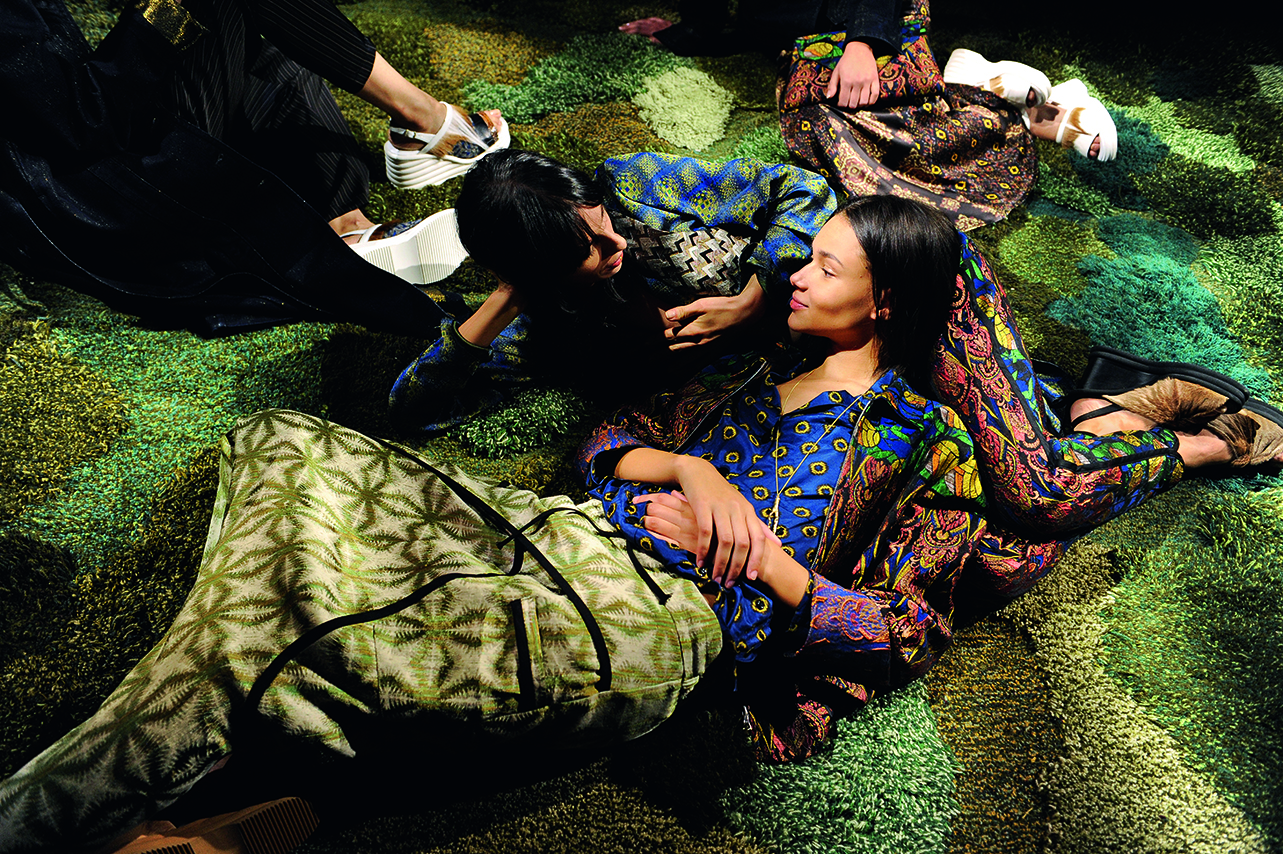
Valerie Steele: I was never at one of the super-famous Dries shows, like the dinner party, but I’ve been to a lot of them over the years, and regardless of what the setting or the presentation is, they’re all very carefully thought-out. What really comes across most is the sincerity and individuality of vision. You know the clothes are going to be special every time. The clothes are almost beyond fashion. They’re collectible pieces, incredibly artistic and beautiful. When Dries pulls it all together in a show, you get a larger sense of what his vision was for a collection as a whole. The one he did a couple of seasons ago, for fall 2016, was all about decadence: the image of the Italian countess Luisa Casati mixed with that of the Italian poet Gabriele D’Annunzio. Rich, deep colors and leopard print—things like that—were mixed in with the tailoring. Nothing was extraneous. He had conceived a unified vision.
I can see various shows of his in my mind’s eye. They’re not really built up like a McQueen or Galliano spectacle was back in the day. They’re not as over-the-top as that. They’re also not just people marching down a runway. They’re something in between, in which there’s an atmosphere more than an elaborate set. He might do something very discreet, such as lighting a beautiful building in a particular way. He really allows you to just soak in his vision through the clothes.
I always feel that the latest show of his I saw was the standout. Each time I go, I’m kind of amazed that he never repeats himself. He always has something that’s distinctively his, but it’s also new. I’m not quite sure how he does that—he’s a great colorist, and that’s difficult to stay consistent with. He understands ornamentation. Nothing he does tips too far in any one direction.
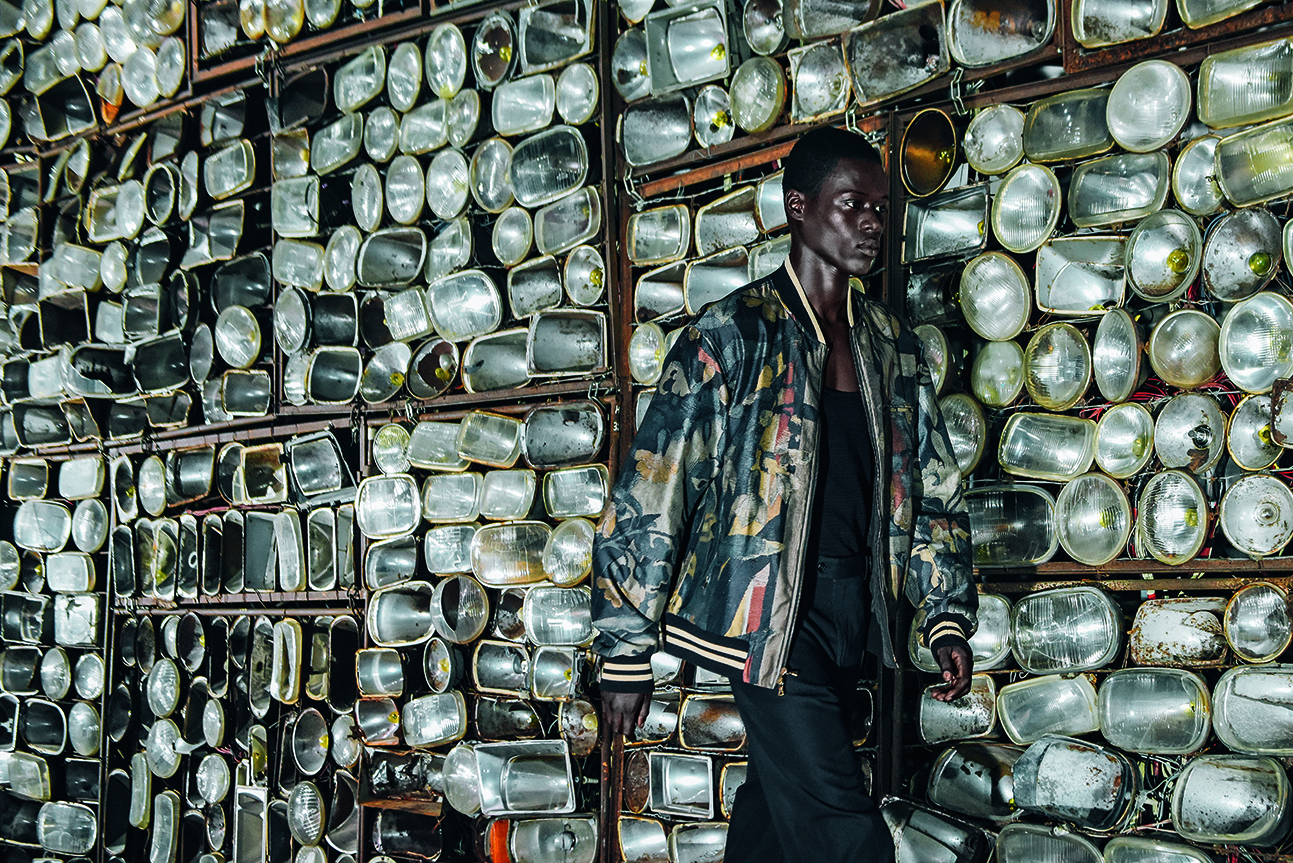
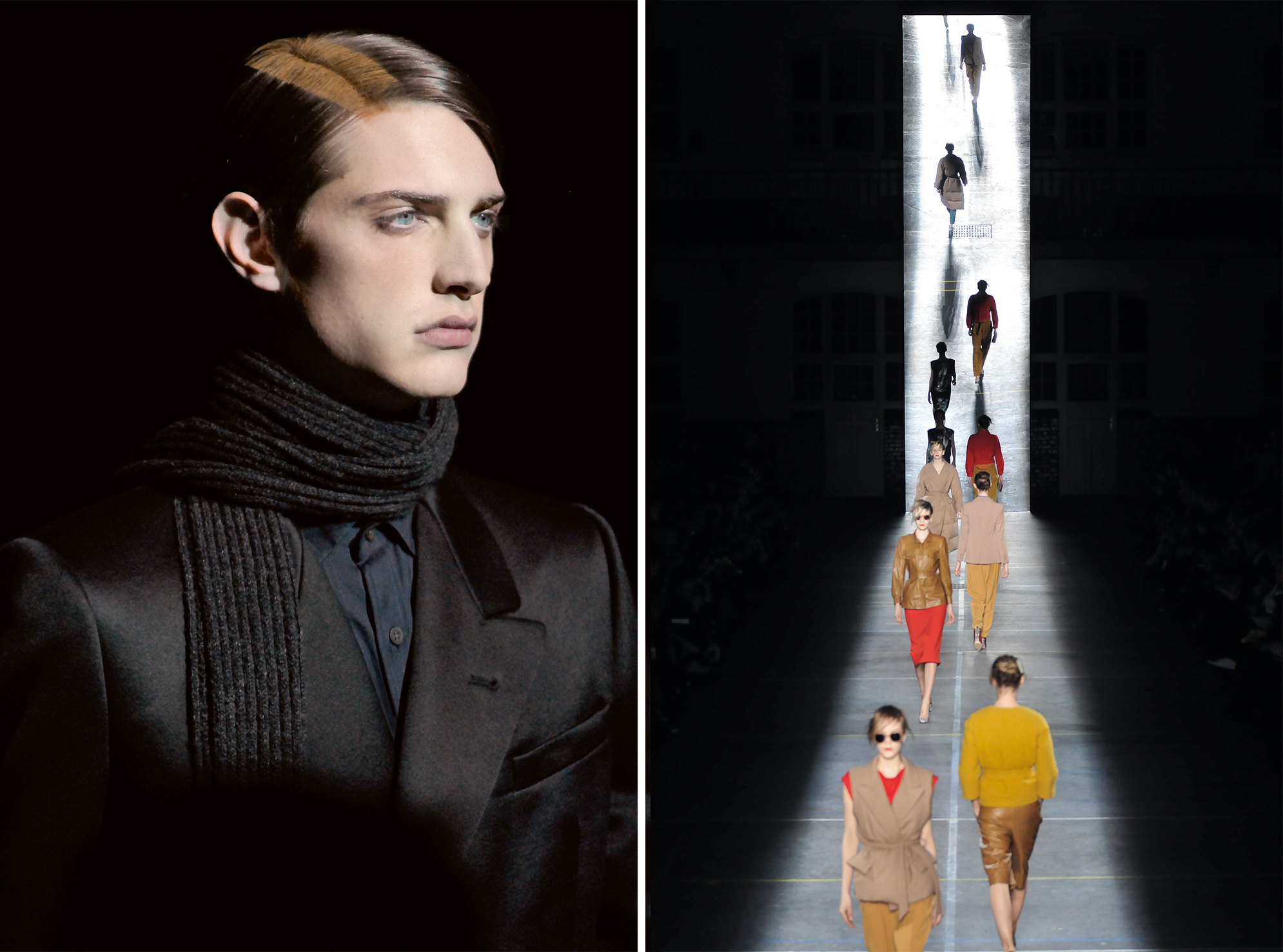
Because he’s an independent, he has freedoms that many in fashion don’t. I don’t think his is a model that anyone could follow now, because it may just be impossible in today’s globalized market. But by creating himself as an independent and not being forced to respond to stockholders—and by being very clever about the way he structures his company—I think he’s been able to do exactly what he wants to. Most designers are lucky if they get one thing, and then they just repeat it. He has that consistency, but there are always new angles to it. You don’t think, Oh god, I’ve seen that again, and yet, at the same time, you could mix pieces by Dries from years apart together, wear them now, and not say, “That’s dated,” or “That’s back when he was doing that thing.” Everything he does is part of a collective whole.
The word “timeless” is a horrible word, and I don’t like to use it, but there does seem to be something about his work that’s timeless, and certainly that stands out from any other designers I can think of. When I go back and think about which collection I liked best, I think about when he did that [fall 2012 ready-to-wear] Chinese dragon collection. It was extremely beautiful, and epitomized his sense of color and the way he draws on different cultural heritages without it ever feeling exploitative. It almost like he’s drawing an homage to what he’s doing.
Most of the Antwerp Six designers don’t have anything like Dries’s sensibility. The majority of them were really clearly drawing on the Japanese—like what Rei Kawakubo and Yohji Yamamoto were doing. Then there was Walter van Beirendonck, who’s off in his own world with his wild pop-culture thing. Then there’s Dries, who’s got this global vision.
